Fisherman caught two massive sharks off a beach on the north west coast of Western Australia.
Jethro Bonnichta and Josh Butterworth reeled in what appears to be an approximately 13-foot tiger shark and a 13-foot-six-inch long hammerhead in the waters north of Carnarvon.
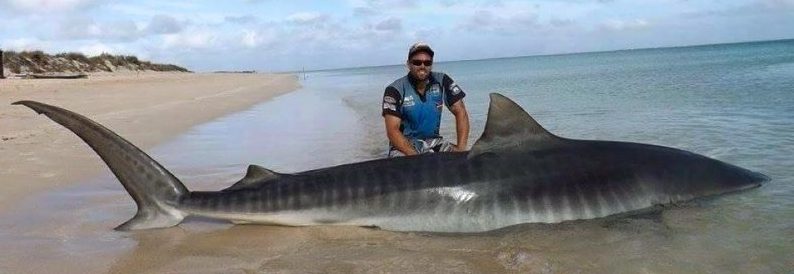
The two shared their photos with Rogue Offshore Facebook.
The tiger shark took around 30-40 minutes to reel in while the hammerhead took about an hour and a half.
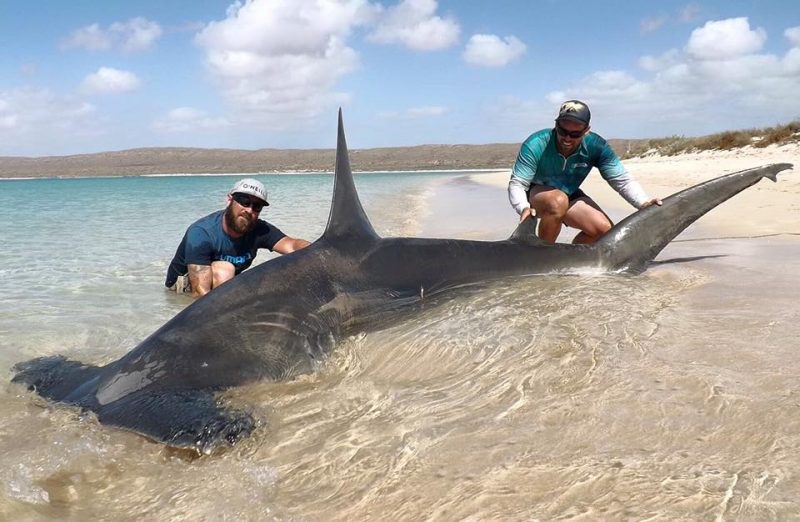
Both sharks were positioned with their heads left in the water so the wave action would provide oxygen to the gills.
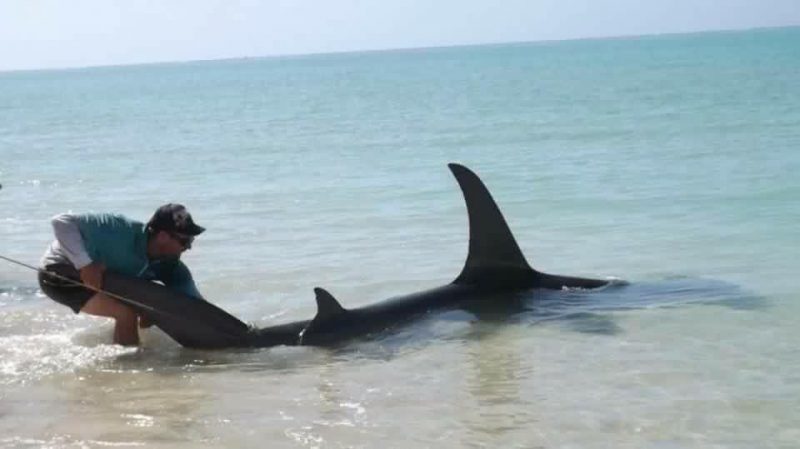
A spokesperson from Rouge Offshore stated that “Both (sharks were) released and swam off … Conservation is the only way we will have our kids catching fish.”
While catch and release is a great way to manage fishers for the future, hammerhead sharks do not always survive after being caught.
Hammerheads are prone to Delayed Mortality.
When the shark becomes stressed, lactic acid builds up internally and the shark is unable to “purge” the chemical which results in the animals’ death.
A study carried out by scientists at the University of Miami on hammerhead, lemon, blacktips, bull, and tiger sharks, discovered that hammerheads were the most likely to die after being caught.
They found that “even with minimal degrees of fighting on a fishing line, hammerheads exhibited the highest levels of lactic acid build of all species studied, followed by blacktip, bull, lemon and tiger sharks.”
The bottom line, hammerheads are not good candidates for catch and release fishing as they may die due to the stress.
Shark fishing is not a very selective sport, as in you never know what is on the line until it comes into view.
Once a hammerhead shark has been identified on a fisherman’s line, the best thing for the shark is to stop reeling it in and safely cut the line as close as possible to the shark’s mouth.
The Great Hammerhead (Sphyrna mokarran), Scalloped Hammerhead (Sphyrna lewini), Smalleye Hammerhead Shark (Sphyrna tudes ) and Smalleye Hammerhead Shark (Sphyrna zygaena) are listed as endangered on IUCN Red List of Threatened Species.

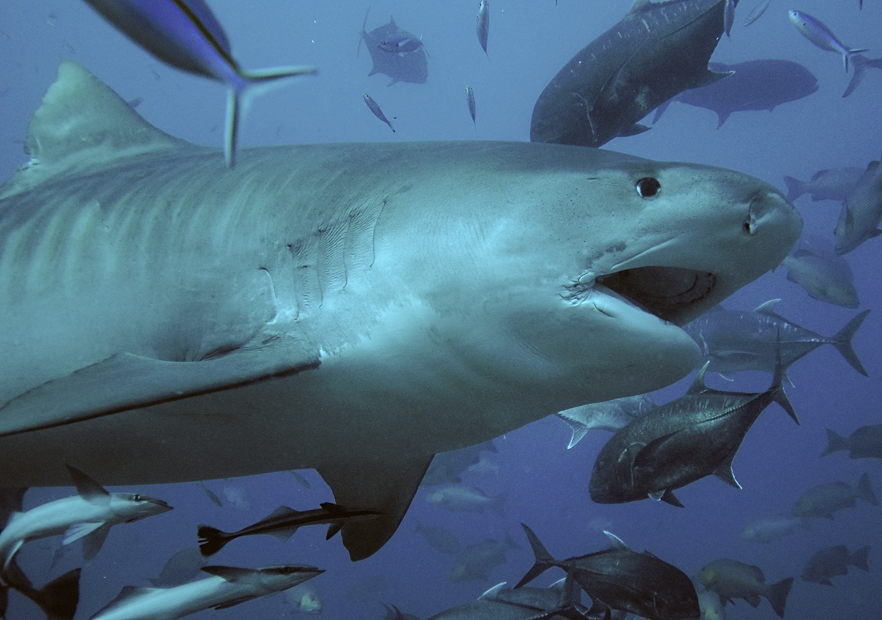
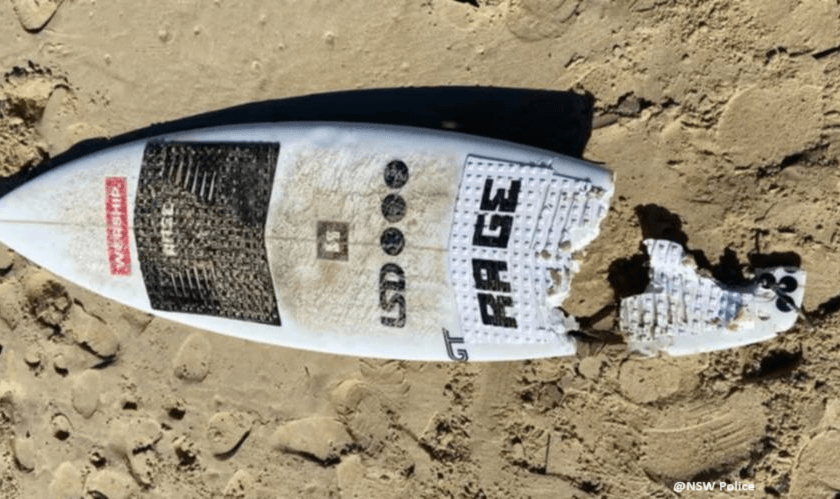
Sickening!